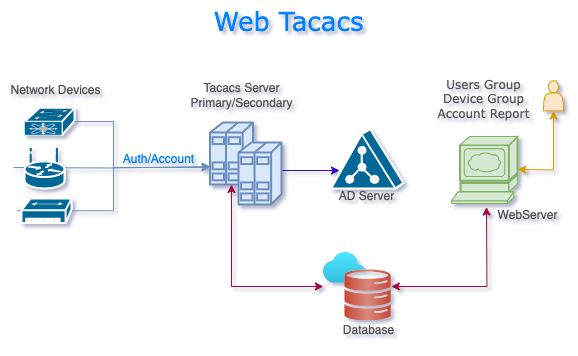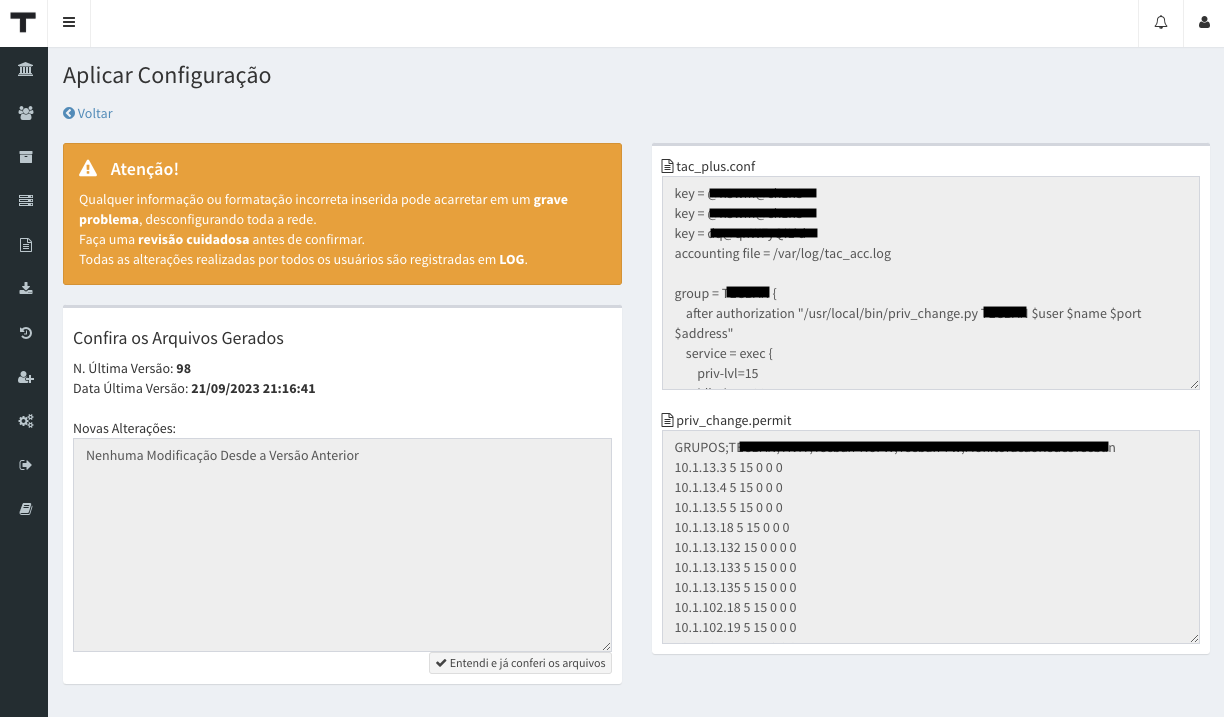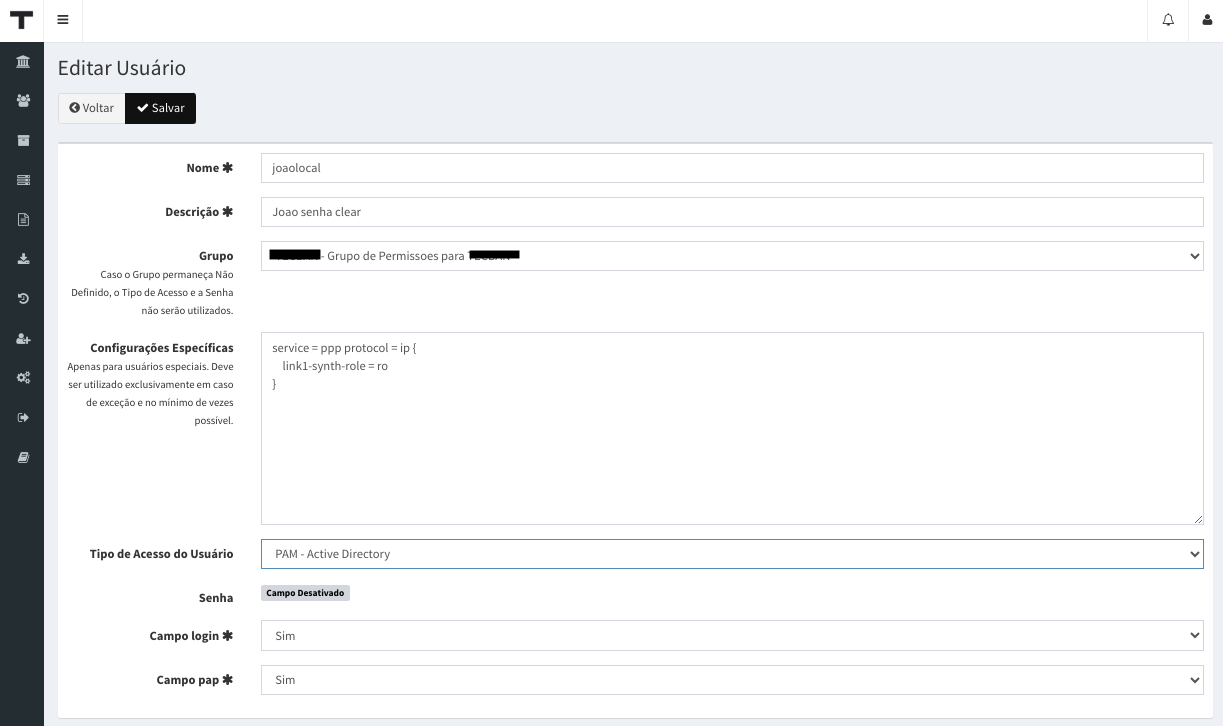My Journey in Software Development
I've been a software developer for over 20 years, starting with languages like BASIC (on MSX and Apple II), Pascal and Delphi.
My journey has taken me through a variety of languages, including TCL, Java, C, and ultimately, Python – my primary language today.
It's an amazing tool, but I also leverage other languages as needed, such as Shell, Golang, and Java.
When it comes to databases, I have a strong foundation in SQL and experience with various RDBMS systems including MySQL, PostgreSQL, Oracle, and SQLite. I've also worked with NoSQL databases like MongoDB, Redis, and OpenSearch.
In the web development arena, I utilize frameworks like Django and FastAPI. I'm also currently exploring Java frameworks like SpringBoot and Quarkus. I'm well-versed in operating systems like Linux, Windows, and macOS, with Linux being my preferred choice. I frequently use Linux for system installation, deployment, configuration, firewall management, log troubleshooting, optimization, and problem-solving.
For the past several years, I've been working at GPr Sistemas as a software engineer and tech lead, developing diverse solutions using agile methodologies and DevOps philosophy and tools. My current focus is on automation tools like Ansible and Terraform, along with CI/CD tools like Jenkins and Gitlab. I hold a Cloud Practitioner certification from AWS and I am also familiar with Azure and Digital Ocean.
Currently, I'm involved in developing a system/app for log and trace analysis, leveraging Python, Django, OpenSearch, OpenTelemetry and PostgreSQL.
Below are some projects in which I participated, designing, implementing, and deploying these systems.
When it comes to databases, I have a strong foundation in SQL and experience with various RDBMS systems including MySQL, PostgreSQL, Oracle, and SQLite. I've also worked with NoSQL databases like MongoDB, Redis, and OpenSearch.
In the web development arena, I utilize frameworks like Django and FastAPI. I'm also currently exploring Java frameworks like SpringBoot and Quarkus. I'm well-versed in operating systems like Linux, Windows, and macOS, with Linux being my preferred choice. I frequently use Linux for system installation, deployment, configuration, firewall management, log troubleshooting, optimization, and problem-solving.
For the past several years, I've been working at GPr Sistemas as a software engineer and tech lead, developing diverse solutions using agile methodologies and DevOps philosophy and tools. My current focus is on automation tools like Ansible and Terraform, along with CI/CD tools like Jenkins and Gitlab. I hold a Cloud Practitioner certification from AWS and I am also familiar with Azure and Digital Ocean.
Currently, I'm involved in developing a system/app for log and trace analysis, leveraging Python, Django, OpenSearch, OpenTelemetry and PostgreSQL.
Below are some projects in which I participated, designing, implementing, and deploying these systems.
Projects
logAI
logAI is an application we are developing to process logs, traces, and metrics. Our complete observability solution.
The primary features include:
More about logAI
The primary features include:
- Customizable dashboards for visualizing metrics and trends;
- Filtering and expression capabilities for alert generation;
- A notification center for sending emails and messages through popular apps;
- Visual transaction tracing across multiple stages of the application;
- Python;
- Django;
- PostgreSQL;
- OpenSearch;
- OpenTelemetry;
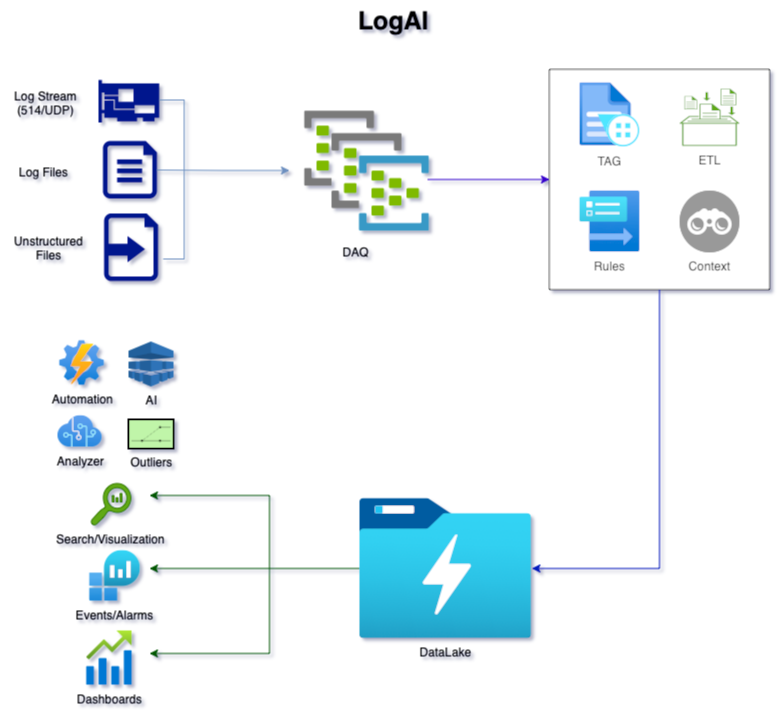
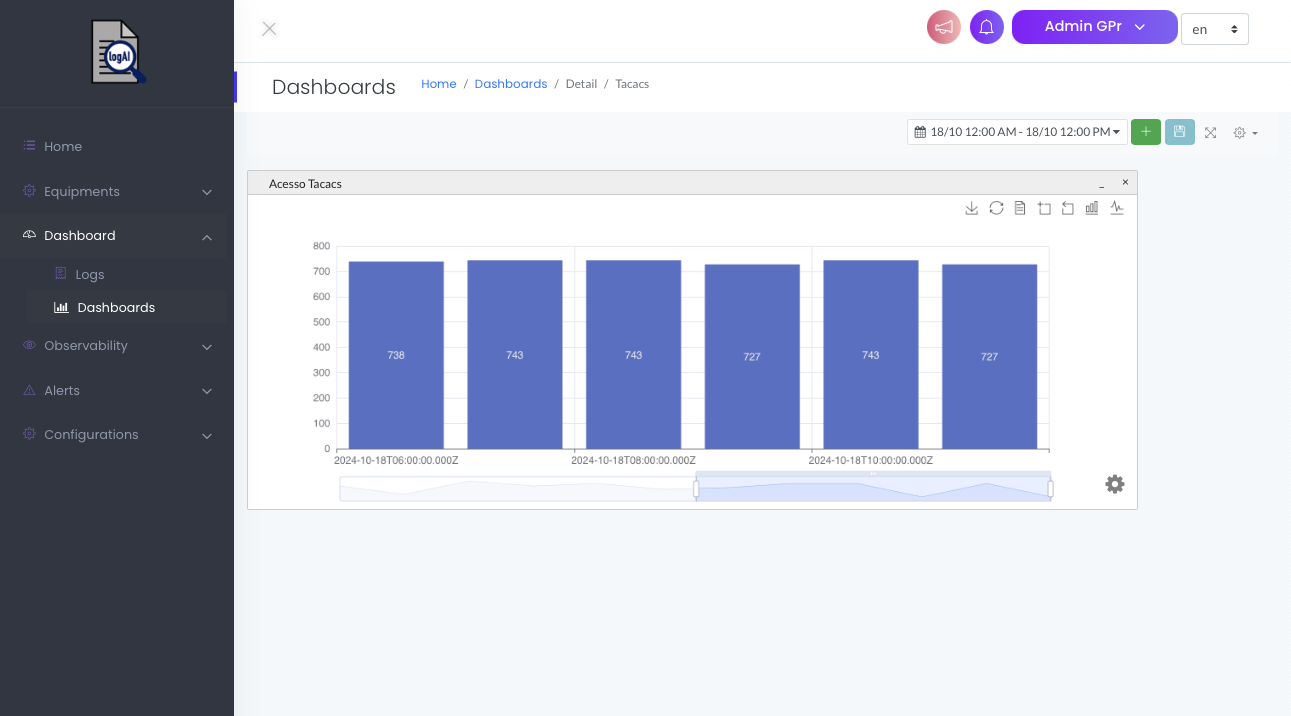
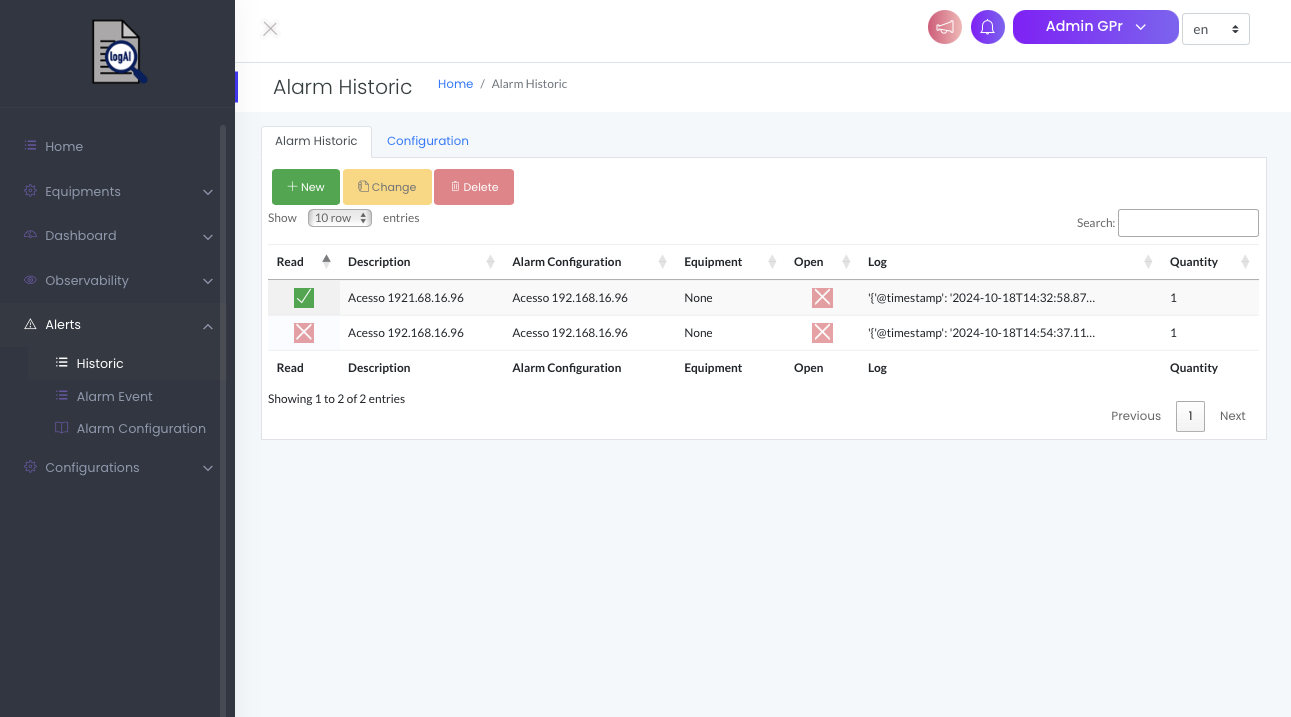
4G Pi Router
This is a experimental project to transform Raspberry PI 3 on a portable 4G/Wifi Router.
A Telit board has been added, enabling operation with a 4G chip, transforming the RPi into a low-cost portable router for internet access.
Beyond internet access, this setup can serve as a data collector, utilizing Wi-Fi, Bluetooth, and USB ports to connect with local sensors in the environment, collecting data for transmission to the cloud.
There's a ton of potential to explore with this setup - you can use Raspberry Pi OS, different programming languages, databases, and more to build all kinds of software solutions.
It is also possible to connect a device via cable through the RJ-45 port.
A multi-color LED indicator has been added to provide a quick and easy visual indication of the device's current status.
A Telit board has been added, enabling operation with a 4G chip, transforming the RPi into a low-cost portable router for internet access.
Beyond internet access, this setup can serve as a data collector, utilizing Wi-Fi, Bluetooth, and USB ports to connect with local sensors in the environment, collecting data for transmission to the cloud.
There's a ton of potential to explore with this setup - you can use Raspberry Pi OS, different programming languages, databases, and more to build all kinds of software solutions.
It is also possible to connect a device via cable through the RJ-45 port.
A multi-color LED indicator has been added to provide a quick and easy visual indication of the device's current status.


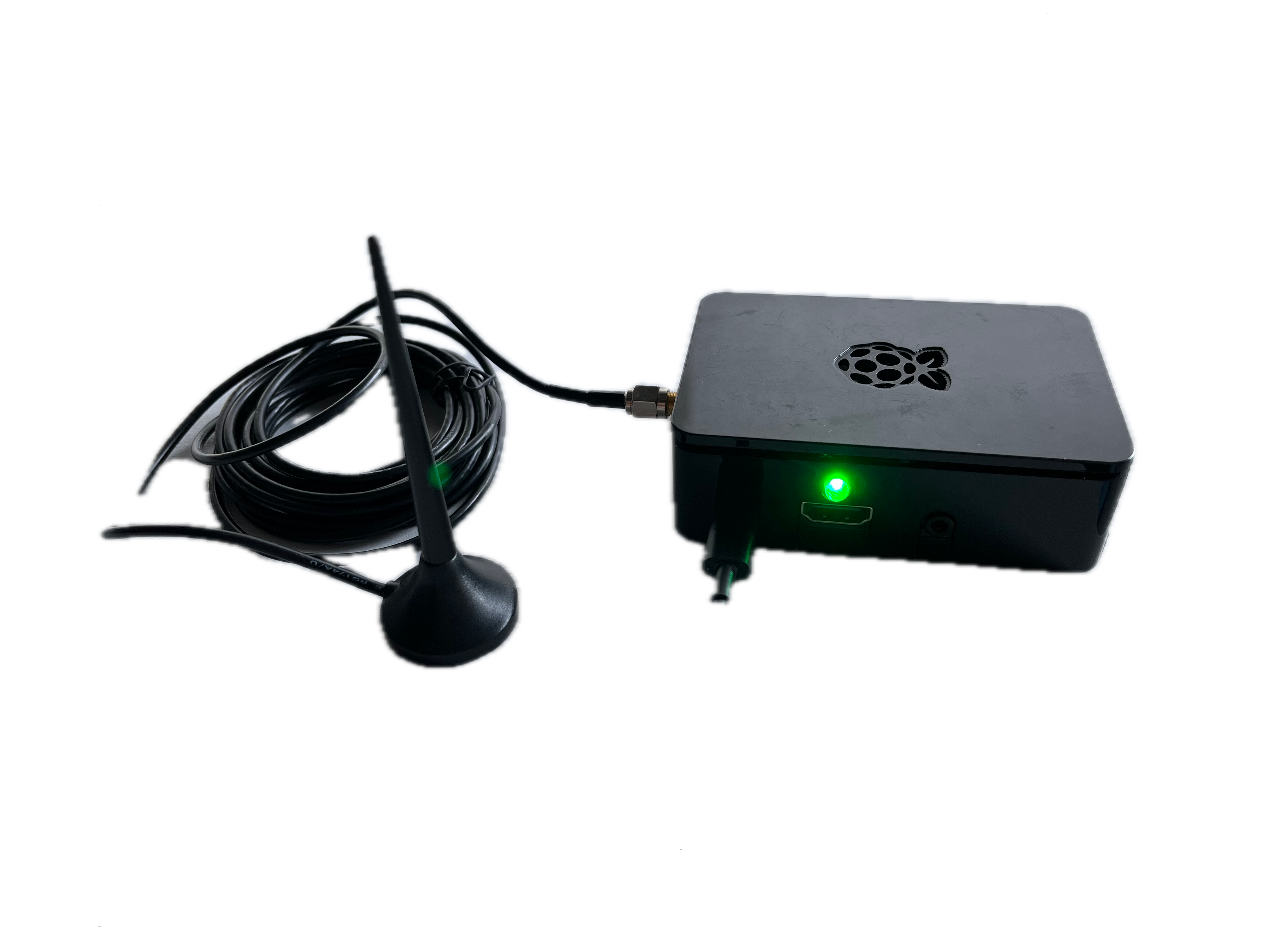
Monet
Monet is an advanced network monitoring system capable of monitoring a vast number of devices (thousands), utilizing protocols such as SNMP, ICMP and API access.
It was developed using Python and C languages and featured an efficient mechanism for collecting data to monitor thousands of network devices.
Extensive use of threads, subprocesses, and queues allows for numerous simultaneous queries to devices, ensuring accurate and up-to-date counter values.
The microservices architecture guarantees stability and high availability. It is possible to scale the number of collectors depending on the number of devices to monitor, making the system highly scalable. All processes are optimized for high efficiency to extract the best performance while minimizing hardware and cloud service costs.
All metrics and raw data collected from variables (OIDs) can be exported to files in Splunk or ElasticSearch formats.
The web application is developed using the Django framework, which provides a robust and extensible interface experience.
Functionality and integrations can be easily expanded by extending the API.
The all data is stored in an Oracle database, with extensive use of caching and queuing on Redis.
The primary features include:
It was developed using Python and C languages and featured an efficient mechanism for collecting data to monitor thousands of network devices.
Extensive use of threads, subprocesses, and queues allows for numerous simultaneous queries to devices, ensuring accurate and up-to-date counter values.
The microservices architecture guarantees stability and high availability. It is possible to scale the number of collectors depending on the number of devices to monitor, making the system highly scalable. All processes are optimized for high efficiency to extract the best performance while minimizing hardware and cloud service costs.
All metrics and raw data collected from variables (OIDs) can be exported to files in Splunk or ElasticSearch formats.
The web application is developed using the Django framework, which provides a robust and extensible interface experience.
Functionality and integrations can be easily expanded by extending the API.
The all data is stored in an Oracle database, with extensive use of caching and queuing on Redis.
The primary features include:
- You can define profiles with sets of variables (OIDs) for each type of device;
- It allows for the generation of calculated metrics using selected variables (OIDs);
- You can create customized metrics from the monitored variables;
- You can create composition and event thresholds to generate alarms and notifications;
- You can create customized dashboards to view the main metrics and alarms;
- It displays network interface bandwidth utilization;
- It displays and triggers alarms based on the data usage of 3G/4G/5G routers;
- It provides several data formats and availability reports;
- It allows for easy integration with ITSM tools;
- It supports triggers for actions and automation;

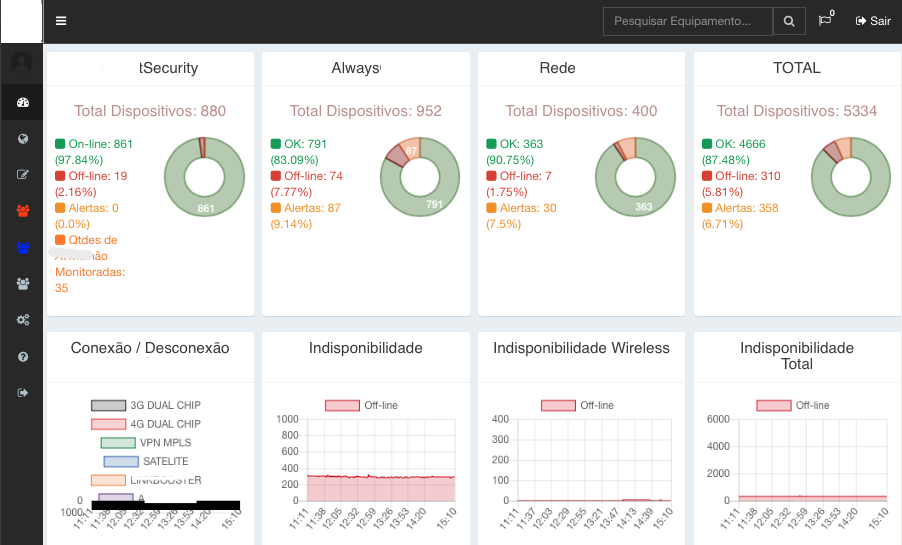

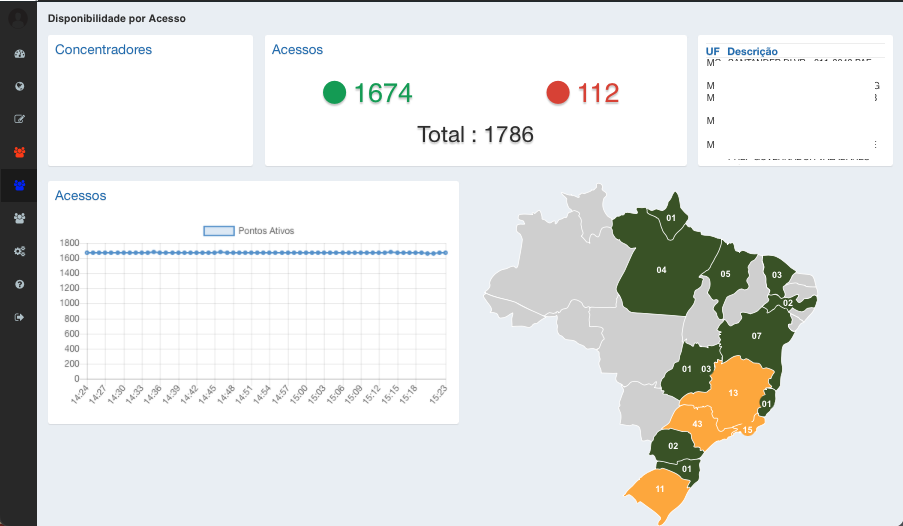
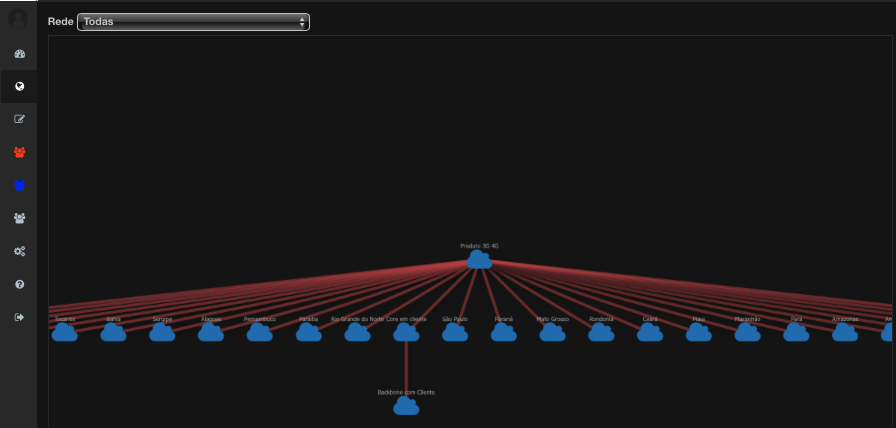
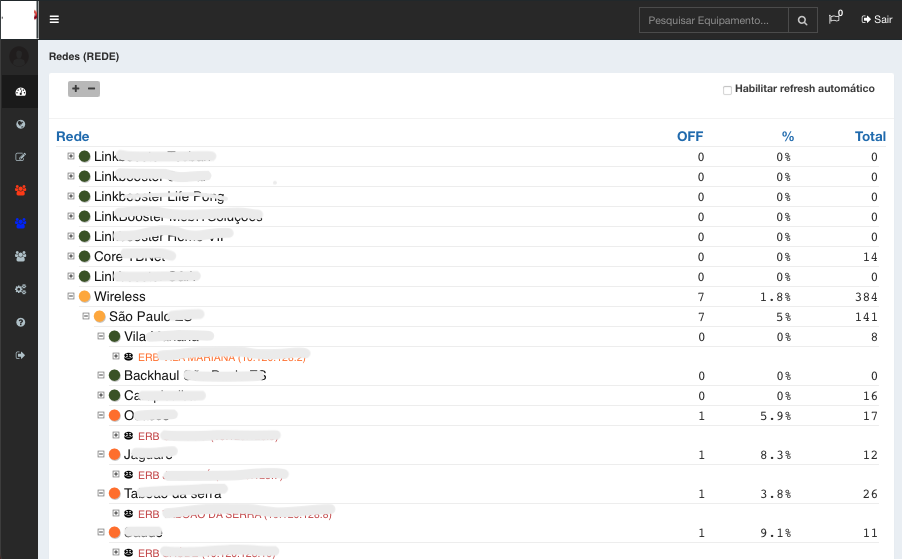
Simcard Control
This tool is a database for storing records of routers and other devices capable of connecting to 3G, 4G, and 5G networks and managing their installed SIM cards.
It allows storage of data such as IP addresses, location, model, ICCID number, credentials, installation date, status, and carrier information, among other details.
The system periodically connects to each router to verify that the recorded ICCID numbers match those installed in the router.
Various reports provide compliance checks, locations of all installed SIM cards, status, availability, and more, making it ideal for managing deployments of thousands of 3G/4G/5G routers and SIM cards.
The system was developed using Python 3, the Django web framework, and an Oracle database. It accesses devices using various protocols (SNMP, SSH, API) depending on the device model, employing scheduled tasks for simultaneous connections to ensure rapid data retrieval.
It can be integrated, via APIs, with other systems such as ITSM platforms or custom systems to meet specific needs.
It allows storage of data such as IP addresses, location, model, ICCID number, credentials, installation date, status, and carrier information, among other details.
The system periodically connects to each router to verify that the recorded ICCID numbers match those installed in the router.
Various reports provide compliance checks, locations of all installed SIM cards, status, availability, and more, making it ideal for managing deployments of thousands of 3G/4G/5G routers and SIM cards.
The system was developed using Python 3, the Django web framework, and an Oracle database. It accesses devices using various protocols (SNMP, SSH, API) depending on the device model, employing scheduled tasks for simultaneous connections to ensure rapid data retrieval.
It can be integrated, via APIs, with other systems such as ITSM platforms or custom systems to meet specific needs.
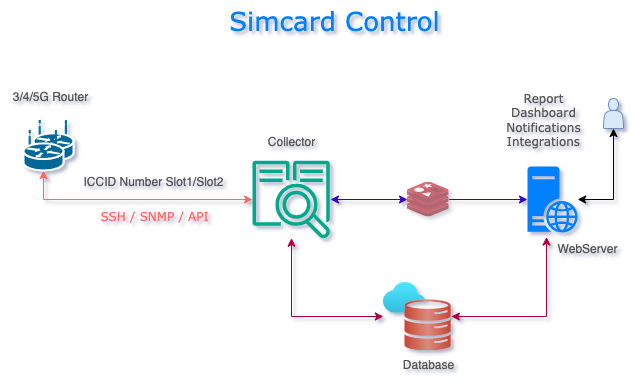
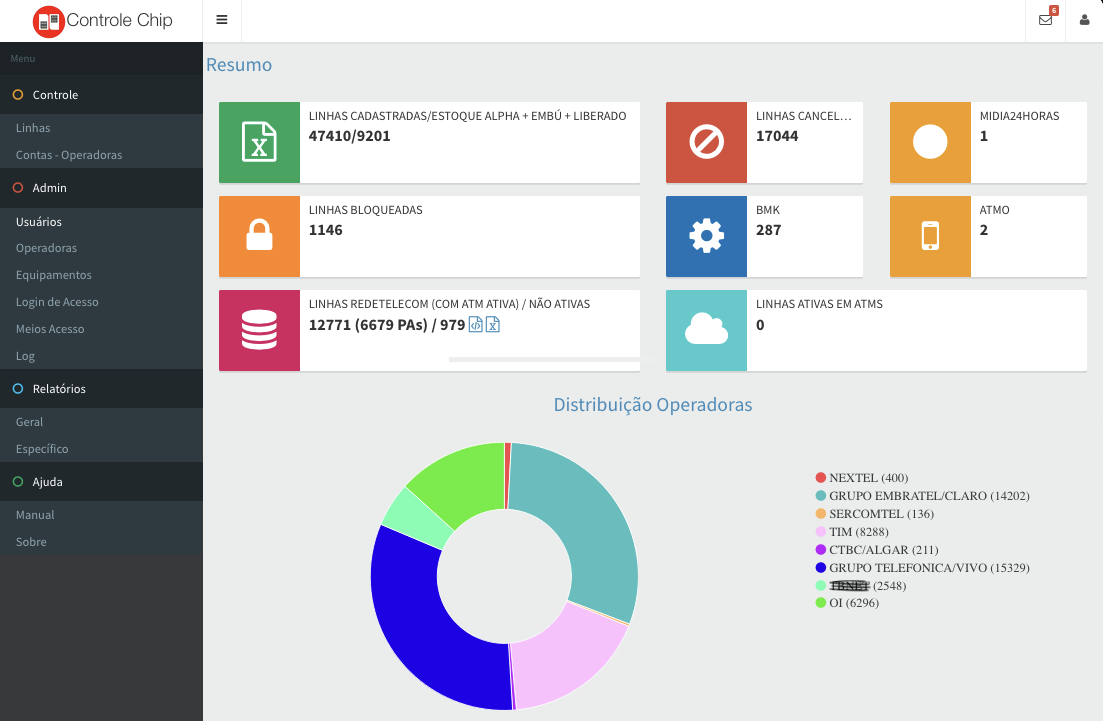

Config Management
This is an advanced tool for managing network device configurations. It allows you to create rules and scripts to check specific configuration parameters,
define policies, and verify compliance for a group of devices.
The application allows the creation of numerous rules and scripts for various device models and functions.
It was designed to monitor a large number of devices continuously and improve compliance rule control by analyzing all collected data.
Support for various device types using protocols such as SNMP, SSH, API, or custom formats.
Several reports provide key information such as:
More about Config Management
The application allows the creation of numerous rules and scripts for various device models and functions.
It was designed to monitor a large number of devices continuously and improve compliance rule control by analyzing all collected data.
Support for various device types using protocols such as SNMP, SSH, API, or custom formats.
Several reports provide key information such as:
- The time and date of each configuration modification, with historical comparisons;
- Consolidated compliance rules and graphical coverage;
- Security compliance warnings and alerts;
- Device lifecycle information.
- Firmware updates: controlled, distributed firmware updates and checks for multiple devices simultaneously;
- Bulk configuration distribution: Allows apply simultaneous configuration changes for multiple device groups, with real-time application monitoring.
- Configuration retrieval: Retrieve the complete configuration of any device at any time manually.
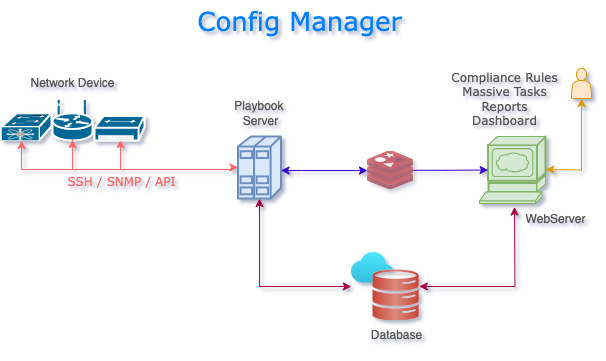
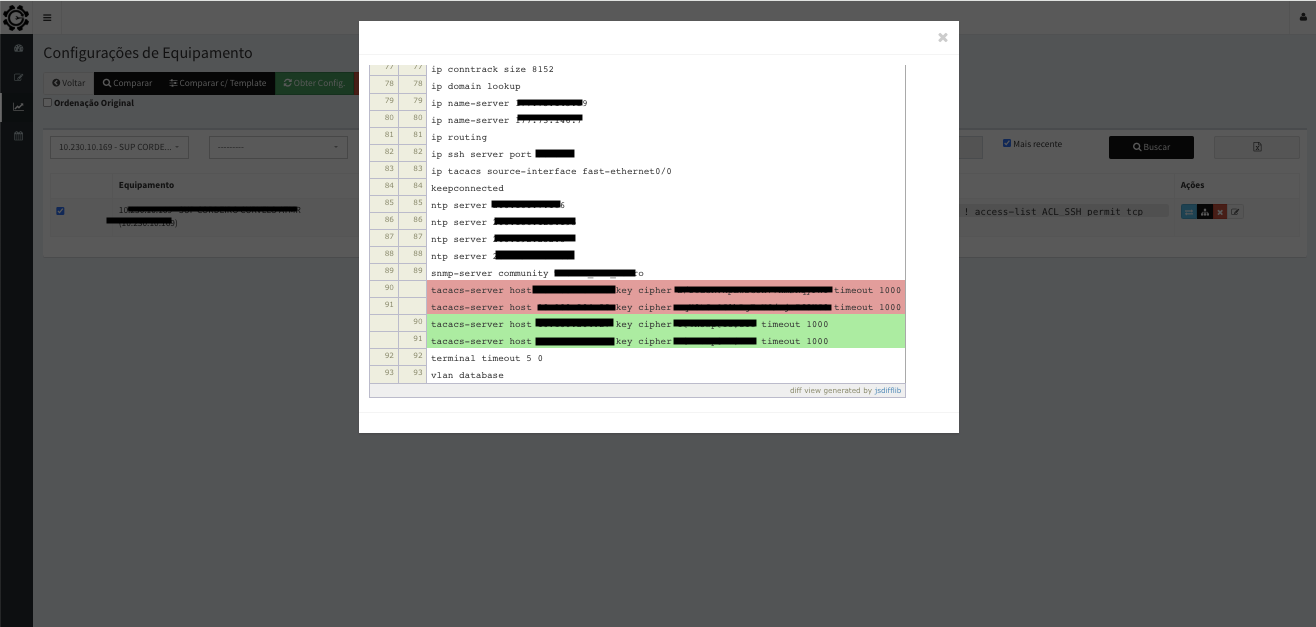
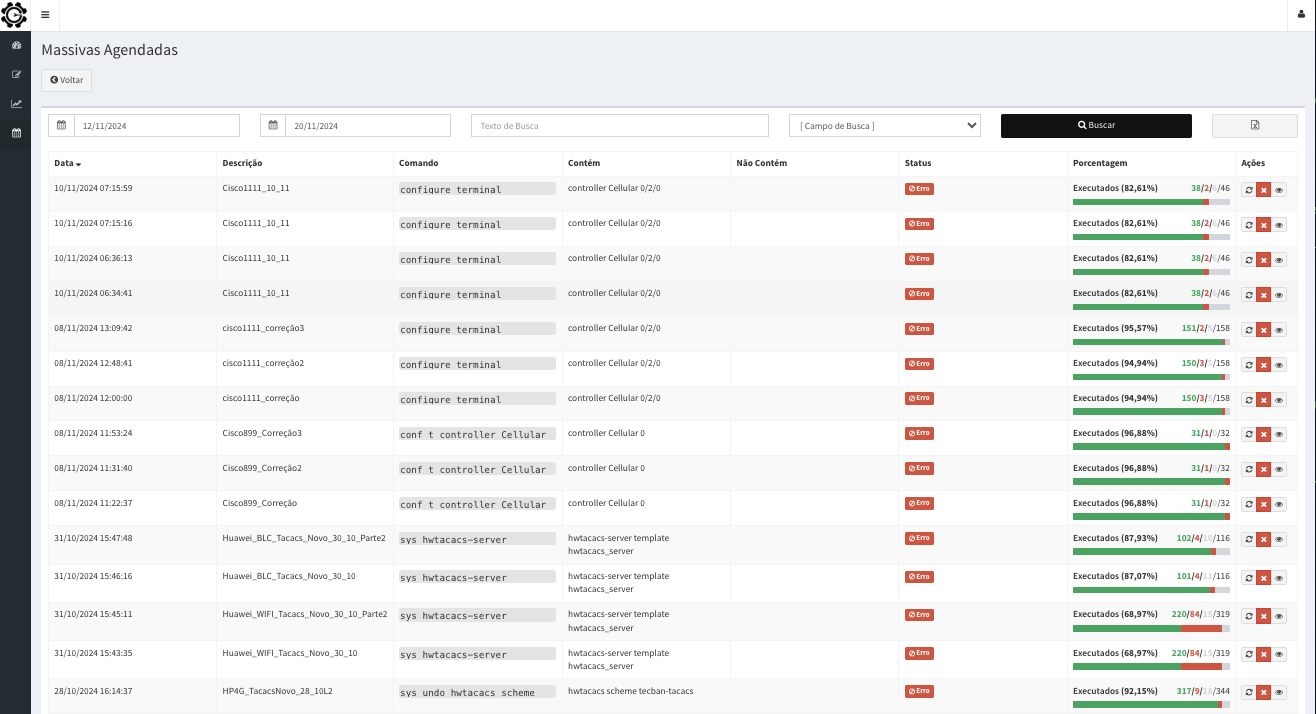
Web Tacacs
Web TACACS is a web interface for easy and fast administration of a TACACS server.
The primary features include:
The primary features include:
- User groups and privilege levels;
- User authentication definitions (AD, clear text, encrypted passwords), groups and methods;
- Device/network/category definitions and associated privileges;
- Device accounting reports;
- Historical configuration changes;
- Active/passive server architecture with database synchronization;
